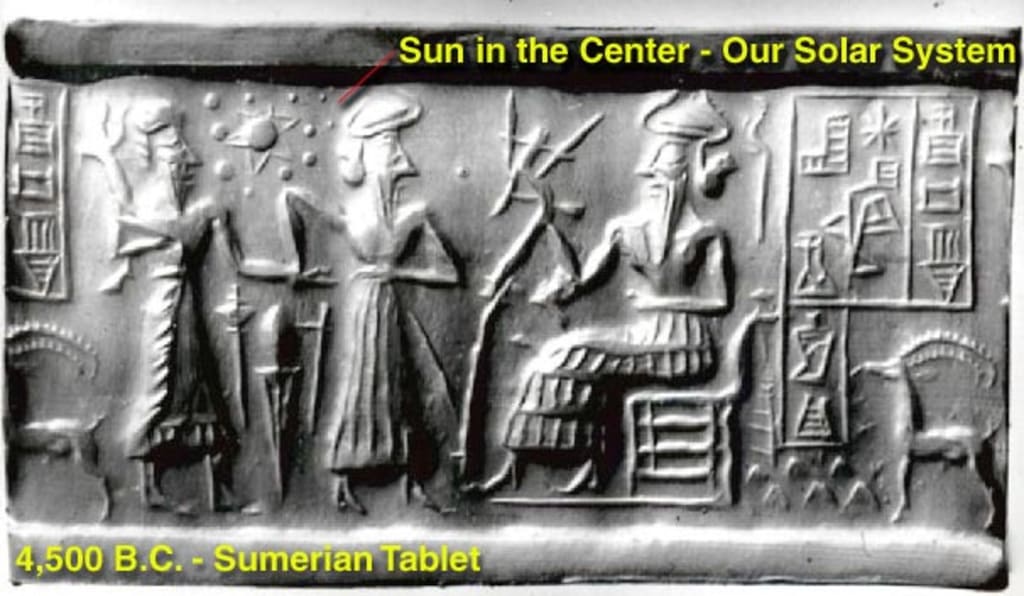
Starting with the Sumerians and ending with NASA
To understand where and how the 11th planet came to be where it is today, you first need a basic understanding of the 10th planet. A good place to start is with the Sumerian texts. The Sumerians describe there being 11 planets in our solar system including the sun making a total of 12.
When the Sumerian tablets are brought up in concern of, or about the tenth planet, the fact that there are 11 planets and the sun is dismissed as the sun, and our moon being included as one of the planets, therefore only leaving the tenth planet in question.
However, there are some Sumerian texts, which clearly show the sun, and 11 planets, and their moons. So, I have a hard time accepting that these people, (the Sumerians) were so smart, or had such great knowledge, as to know of all these planets in our solar system, but at the same time were so stupid that they counted our moon as both a planet and then counted it again as a moon, thereby counting it twice.

Determining whether an object would be considered a planet, or a moon, has nothing to do with its size. There are many moons that are bigger than planets. For example, Jupiter's moon Ganymede and Saturn's moon Titan are both bigger than the planet Mercury. Moreover, Jupiter's moons Ganymede, Callisto, Io, Europa, Saturn's moon Titan, Neptune's moon Triton, and even Earth's moon, are all bigger than Pluto. What determines an object to be a planet or a moon, is if the celestial body is in orbit around the sun, then it is a planet. However, if the celestial body is in orbit around another object, that is already in orbit around the sun, then it is a moon.
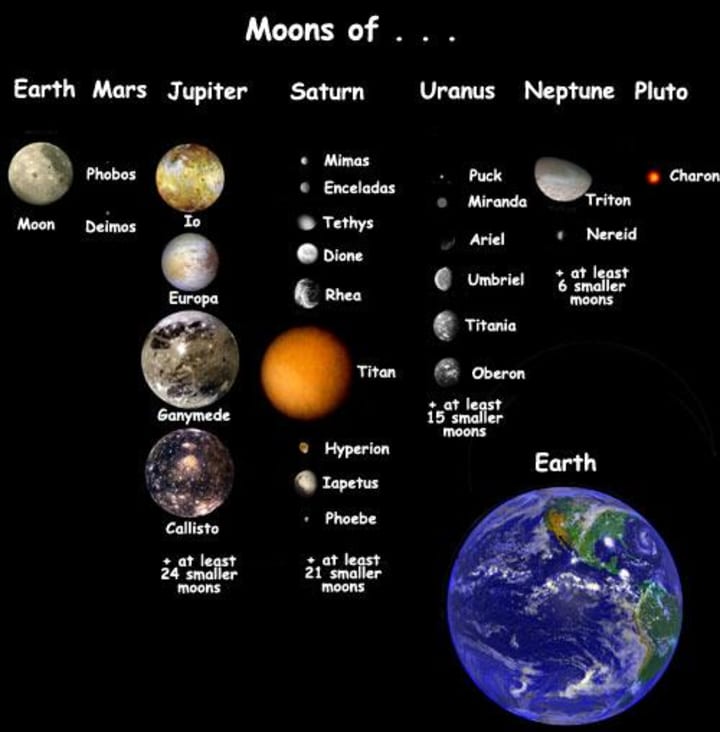
Surely the Sumerians knew this simple fact.
After researching further on this subject, why our moon is counted as one of the planets. Can more clearly be understood.
The explanation starts a long time ago when this 10th planet, a brown dwarf, came through the inner solar system.
This brown dwarf had at least eight moons following it, one of these moons was a large watery moon. When this brown dwarf passed near an existing planet, this watery moon collided with this other planet, breaking it into a million pieces. This collision left a ring of "rocks" in orbit around the sun between Mars and Jupiter, referred to in ancient Sumerian writings as a hammered bracelet. Notice in Gen. 1:6-9 the word firmament. It is in Hebrew "raqia" (St7549), and means "an expanse." The root for this word and its verb form is in Hebrew "raqa" (St 7554) and means to expand by hammering. Anyway, this area in space is now known as the asteroid belt.
Meanwhile, the largest piece of this watery moon, dramatically slowdown by the collision, still tried to follow its mother, the brown dwarf, as it made its rotation around the sun. However, once the gap was large enough that the brown dwarf or 10th planet was now on the other side of the sun, the sun's influence took over and this large piece of the watery moon was left behind while its parent planet continued on without it.
This watery moon had now fallen from the place of its creation to become one of the known planets. As the water filled in the gaps left from the collision, most of the landmass that was then exposed, on this watery new world, was on one side of the planet.
Of course, the name that we today use, or have given to this planet is earth. That's right, the earth is the 11th planet. Earth, having been originally created as a moon, was the 11th celestial body to become a planet, and if you know and understand this, the statement that our moon, (meaning the moon that we are standing on) is counted as one of the planets, now makes complete and total sense. There is also now no conflict with counting the moon twice. Because our moon (Earth) is counted once as a planet, and Earth's moon is counted as a moon.
Let's look further at the evidence that supports this theory, shall we? In addition, if Earth is the 11th member of this solar system, that still does not tell us where this other celestial body or member of our solar system is located, or does it?
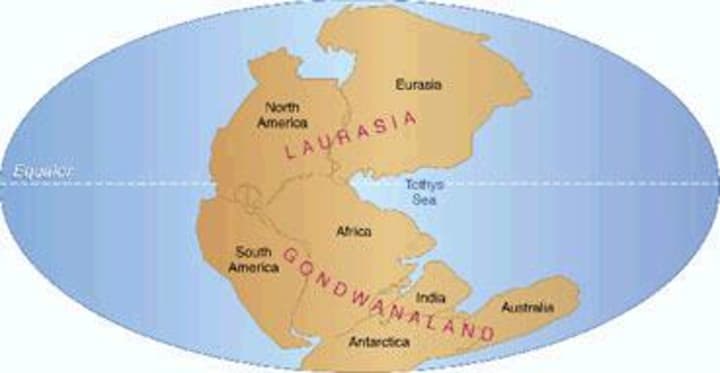
The Late Heavy Bombardment
In support of this conjecture, I offer this additional line of evidence. There is direct evidence for the explosion or a collision of one or more large planets in the very early solar system. From studies of lunar rocks, it is now known that the Moon, and presumably the entire solar system with it, underwent a “late heavy bombardment” of unknown origin not long after the major planets formed. The following are relevant descriptions of the event.
The late heavy bombardment, occurs relatively late in the enlargement history of the terrestrial planets, at a time when the vast majority of that zone’s planet materials are already expected to have either impacted on the planets or been dynamically ejected from the region of the inner planets.
It appears that a flux of impacts flooded the region of the terrestrial planets at this point in the solar system’s history, and is preserved in the crater recording of the heavily cratered terrain on each planet.
What puzzles astronomers is why this occurred so long after the birth of the solar system.
An essential requirement of any explanation for the late heavy bombardment is that the impacts be “stored” somewhere in the solar system until they are suddenly unleashed.
A plausible explanation for the late heavy bombardment remains something of a mystery.
It seems likely that the late heavy bombardment is not the tail-off of planetary enlargement but rather was a later event, superimposed on the tail-off, as the crater record suggests.
In short, the late heavy bombardment, a real solar system event, sounds like just the sort of early planetary explosion or collision event that is suggested by the line of conjecture I am pursuing.
Planet harmonics
We now know the planets in our solar system are not just randomly in various places but can be mathematically linked in a series of waves, much like light waves or sound waves.
Perhaps the easiest way to think of it, for me at least, is to liken it to playing the piano, where each of the planets' locations is like a key on the piano, and if you were to play the planets, they would play like a piano, each in its harmonic place.
Many ancient cultures including the Sumerians would use base 12 as a counting system at various times, and in this system, the vibrations of the number 13 would represent an octave, the first counting unit of the next level, just as 10 is the next level of the number 1 when using a base 10 system. The vibrations of the number 13 as an octave can be seen on a conventional piano if you were to play a chromatic scale, where you go from C to C playing both white and black keys. Each scale will have 12 notes before resolving to the Octave on the 13th. (I will be going into more detail, about the exact location of the planets, in a later section.)
Therefore, we can see that Earth's location is a natural harmonic in the solar system and a natural place for a planet to form. A planet did just that and formed in this harmonic, and when the intruding 11th planet was left behind, it eventually found its way into settling into one of these harmonics, but this location was already taken. So, Earth simply took up the opposite side in that same harmonic, much like a North and Southside of a magnet.
So the missing planet is in the same orbit as Earth, but always on the opposite side of the sun, thereby avoiding visual detection from Earth. The two planets are in a Geo synchronized orbit around the sun.
Well now I'm just talking crazy, right? Do I have any evidence to back this statement up? Actually, there is quite a lot to back this statement.
(P.S. This time of the earth settling in was likely to have been an "ICE AGE" before the earth's orbit stabilized.)
Starting with the oldest and making our way to the present.
Sumerian tablets
First, if we take a closer look at this Sumerian tablet that shows the 11 planets and their connection to the moons, which of course is an orbital connection, you can see the sun above, five more planets with rays coming out from them, these are the gas giants and brown dwarf (the big ones). And six more terrestrial planets. If you look closely, two of these terrestrial planets show their orbital connection to their moons, represented by lines, and are also connected together, representing an orbital connection between the two planets. They are in the three and four O'clock positions on this tablet.

Second, there are many ancient legends and stories about the two siblings, usually male and female, that I believe could be references to these two planets. So, I sometimes referred to the two planets, as Mother Earth, and Father Earth, THE TWINS.
The possibility of another planet on the other side of the sun that shares the same orbit as Earth has been brought up before. Some people have said this can't be. Let us look at one such place for a moment.
"Indeed, if another planet was following an orbit around the Sun exactly symmetrical to that of Earth's, it could never be seen directly from the Earth. As you said, flying a space probe away from the Earth and looking around the Sun might be one way of checking for the existence of such a planet. Another way would be to look for perturbations of the orbits of Venus and/or Mars by the gravity of that hidden planet. That would only work if the planet was massive enough, an asteroid would not generate enough gravity to tug Mars or Venus around significantly.
This said, the existence of such an object is very unlikely. We already know that the eight other planets of the Solar System did not form in symmetrical pairs so why would Earth? Also, it would not be consistent with present ideas about planet formation which involve the condensation of a ring of material from a protoplanetary disk. Each budding planet sweeps the material in a ring and so there is nothing left for another planet at the same distance from the Sun to be made up from."
Marc Herant, Astro moderator, mad scientist network
I love his reasons why it is unlikely because as I will point out those reasons, don't hold up.
He states one reason is because, "two planets should not form in the same location."
This of course has already been explained, because we have shown that only one planet formed in this location, the other one (Earth) was created around the brown dwarf and then was left here.
He also said one way of checking for the existence of such a planet "would be to look for perturbations of the orbits"
That's a great idea.
First, let's take a look at Earth's orbit.
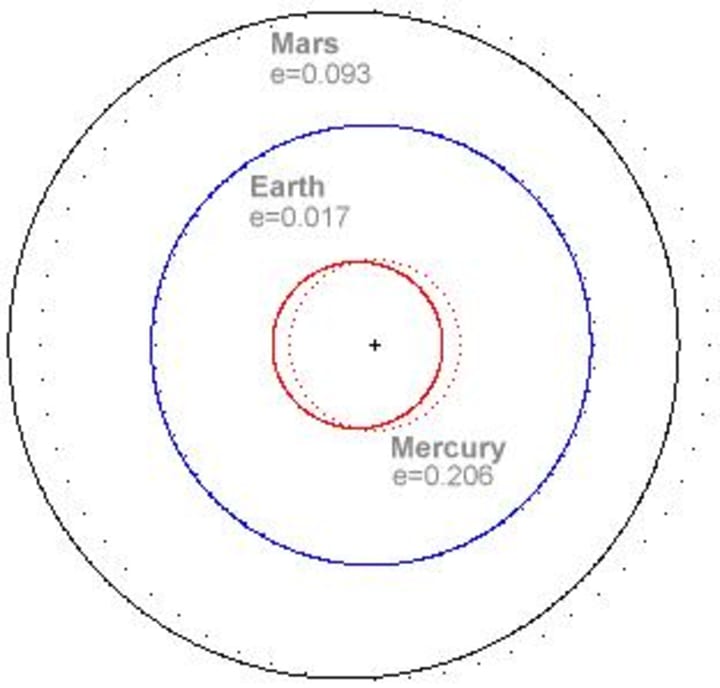
The orbits of Mercury (red), Earth (blue), and Mars (black). The solid lines indicate each planet's elliptical path around the Sun. The dotted lines show circular paths with the same mean separation from the center. Earth is almost exactly the same distance from the Sun at aphelion and perihelion, but the orbits of Mars and Mercury depart significantly from a circle. For more information, please visit Bridgewater College's Interactive Planetary Orbits website. None of the planets in our solar system, have perfect orbits around the sun, but Earth has an almost perfect orbit by comparison. The normal seems to be eccentric orbits. Most planets follow orbits that are more elliptical than Earth's. Could it be that this other planet acts like a counterbalance to Earth? There has to be a reason that Earth's orbit is so close to perfect. Is a binary orbit system the answer?
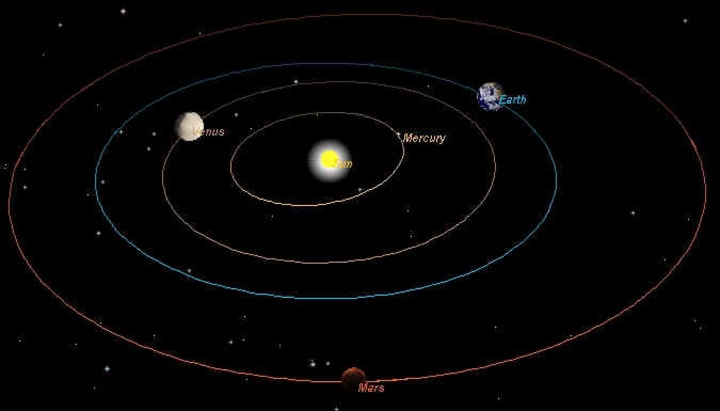
Why is Earth's orbit so close to perfect?
Is a binary orbit system the answer?
PLANET VULCAN
I know there are some people thinking, "Vulcan, is he talking about the fictional planet Vulcan in Star Trek?" No, there was a real search for a planet named Vulcan.
Today every schoolchild learns that our solar system contains planets in orbit around the sun, plus a variety of other bodies such as asteroids. The discovery of these facts was far from straightforward. In some cases, the successes are stunning proof of the veracity of Newtonian mechanics; in others, such as the quest for a hypothetical planet "Vulcan" orbiting well inside Mercury, the fallacies and failures are equally staggering, or are they?
Before it spawned Spock, the "planet Vulcan" was proposed to orbit inside Mercury to account for a chronic deviation in Mercury's predicted orbit. When amateur astronomer Edmond Lescarbault claimed to see the culprit. Case closed, right? Nevertheless, try as they might, no one else could observe the fugitive; still, theoretically, its existence suited world-class mathematician Urbain Jean Joseph Le Verrier, so he offered proof. Le Verrier made his name by explaining perturbations in Uranus orbit in terms of an unknown planet, duly discovered as Neptune in 1846. Astronomers tramping to solar eclipses to glimpse Vulcan, the repeated futility of which finished it off, but the problem of Mercury's orbit persisted. Einstein eventually solved it: a curvature of space-time, not a planet, explained Mercury's orbit.
Le Verrier (Director of the Paris Observatory early in the 19th century) in pursuit of his obsession with extending the universality of Newton's Laws, proving the planet Vulcan's existence, and securing his place in history as one of the greatest astronomers of his time was all for naught, as history would have it.
For a period of many years in the late nineteenth century, some, if not all, of the world's astronomer's believed in the existence of a planet Vulcan that orbited the Sun inside the orbit of Mercury.
The story actually starts in 1781 with the discovery by William Herschel of the planet Uranus. It soon became clear to astronomers that Uranus was behaving badly, it was not moving along the orbit predicted for it by Newtonian physics. What could be the matter? Was Newton wrong? Impossible! If Newton was not wrong, then he had to be right, and something else had to be causing the odd orbit of Uranus, something doing so in obedience to Newton's laws. The obvious answer was that there was another planet beyond Uranus, the gravitational influence of which was causing Uranus to orbit as it did.

Finding this hypothetical planet was a huge challenge. In the early 1840s, two mathematicians, John C. Adams of England and Urbain Jean Joseph LeVerrier of France (shown above on a 1958 French postage stamp, England has never so honored Adams), both started working on the problem independently. It was incredibly complex, for it required taking into account the gravitational influences of the Moon, the Sun, and the known planets on the orbit of Uranus and then using the nature of the unexplained Uranian movement to predict the orbit of the new planet. Adams and LeVerrier solved the problem almost simultaneously. On September 23, 1846, German astronomers in Berlin, using LeVerrier's predictions (Adams had been somewhat shy about publishing his work) discovered Neptune.
The discovery was hailed, quite properly, as a great victory for Newtonian theory. LeVerrier and Adams went on to great fame. The discovery of Neptune was, it should be noted, a great embarrassment to astrology, which had never even hinted at the existence of such a planet. The same was true of the earlier discovery of Uranus and the later discovery of Pluto. Not to be fazed, however, astrologers attributed influences to the planets following their discoveries.
Impressive as the discovery of Neptune was, another challenge to the Newtonian view of the solar system remained. Mercury was also orbiting in a fashion that was not predicted by Newton's laws. It was natural to try the same approach to the problem of Mercury's orbit as had been applied so successfully to the case of Uranus. And try LeVerrier did. He spent much time and effort throughout the rest of his productive life calculating where the planet Vulcan, interior to Mercury's orbit, should be. He was occasionally buoyed by supposed reports of sightings of Vulcan where the calculations, sort of, said it should be.
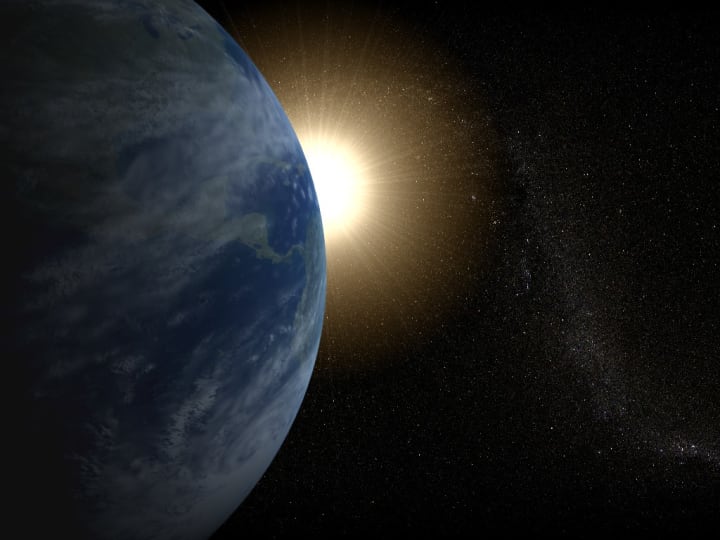
LeVerrier died in 1877 and so never knew the solution to the mystery of Mercury's orbit. Its orbital deviations were shown by Einstein in 1915 to be due to relativistic effects of the Sun's huge mass bending space-time. These effects are utterly trivial for planets further away from the Sun.
Skeptics will be especially interested to note that while astronomers abandoned Vulcan by the early twentieth century, astrologers, no doubt stung by being caught out when Uranus, Neptune, and Pluto were discovered, have refused to give up on Vulcan.
So the effects of another planet are seen, very much so with Mercury, but since the other planet has not been seen yet, it was presumed to be closer to the sun than Mercury. After a lifetime of people looking for an explanation for the strange behavior of the planet Mercury, it was finally accepted to be a space-time fluctuation. In addition, this space-time distortion is the accepted reason, even today!
Although it is not a point of fact, it is interesting that the fictional planet Vulcan from star trek also shared an orbit with another planet.
"The planet Vulcan is located in the same spiral arm of the Milky Way as the Earth. The Vulcan's solar system is currently comprised of three planets, the largest of which is their homeworld. Many centuries ago, Vulcan had several small iron-nickel moons. At an early stage in Vulcan space flight, these moons were mined as a source of ore, since the planet itself was poor in ferrous materials. The lack of moons is more than compensated by Vulcan's sister planet, T'Khut. Vulcan (T'Khasi) and T'Khut are unique in that they revolve around a common point in the same orbit. T'Khut dominates the sky and its closeness causes gravitational stress on the planet Vulcan. This is a major factor in planetary tectonic activity and maintains active volcanism."

Did Gene Roddenberry creator of Star Trek know something we do not?
Anyway, there are irregularities in Mercury's orbit. On several occasions, the planet Vulcan was thought to have been discovered and seen. However, knowing that the missing planet, is on the other side of the sun, in the same orbit as Earth, what was observed, was obviously not the other planet. It is possible, however, that one of the moons of this planet could have been seen.
Moons of Father Earth
Here is a recent example.
http://news.bbc.co.uk/2/hi/science/nature/2347663.stm
Earth's little brother found
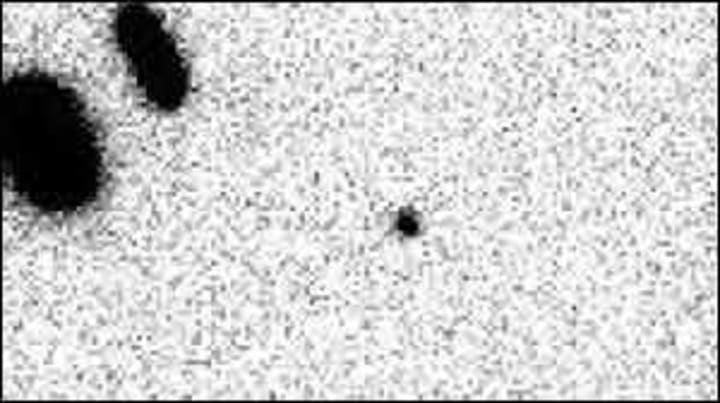
The asteroid was found almost by accident
"Astronomers have discovered an object that is in a companion orbit to the Earth. It is a first. Asteroid 2002 AA29 is only about 100 meters wide and never comes closer than 5.8 million kilometers (3.6 million miles) to our planet.
But it shares the Earth's orbit around the Sun, at first on one side of the Earth and then escaping to travel along our planet's path around the Sun until it encounters the Earth from the other side.
Then it goes back again." (Then it goes back again? Why?)
"Co-orbital object
2002 AA29 was discovered by the linear automated sky survey project on 9 January 2002.
Martin Connors of Athabasca University in Canada writes in the journal Meteoritics and Planetary Science that it "moves in a very Earth-like orbit," and is the "first true co-orbital object of Earth."
2002 AA29 has a bizarre horseshoe orbit around the sun
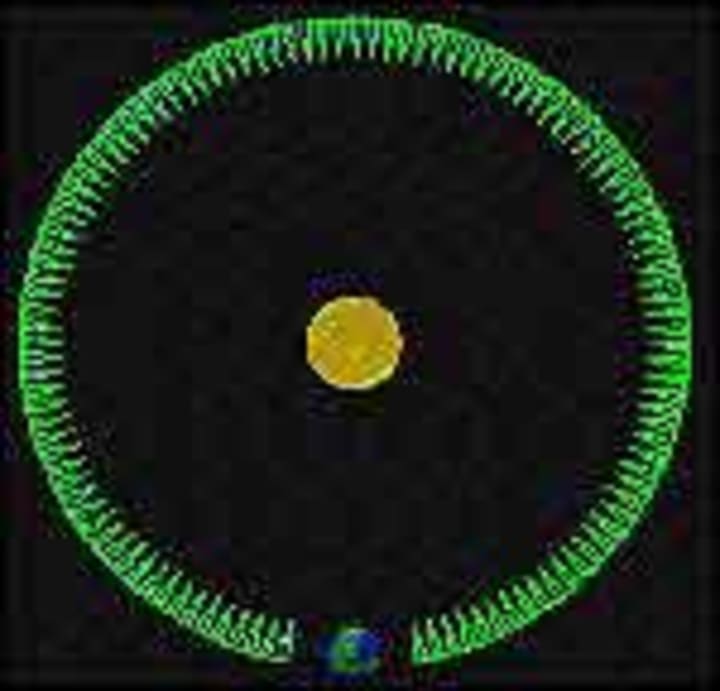
General Simon Worden of the United States Space Command described it as a "near-Earth object that is close to being trapped by the Earth as a second natural satellite".
According to Helena Morais of the University of Lisbon and Allesandro Morbidelli of the University of Nice, writing in a paper to be published in the journal, Icarus: "2002 AA29 seems to be in a temporary horseshoe-like orbit with the Earth."
This puts 2002 AA29 is in the same class as 3753 Cruithne, a similar rocky body in a horseshoe orbit around the Earth. But astronomers classify 2002 AA29 as the first real co-orbital body found associated with the Earth because it more completely shares the Earth's path around the Sun.
Co-orbiting asteroids have been found around other planets.
(two objects Co-orbiting in the same location, is a fact. We just haven't found a planet-size Co-orbiter yet. Or have we?)
"It is clear that 2002 AA29 was discovered by accident at a time when it was at one end of its horseshoe orbit and, being at its closest to the Earth, was bright enough to be detected in an automated sky survey.
Detailed observations of its trajectory through space show that 2002 AA29 will reach its minimum close approach to the Earth - 12 times the distance between Earth and the Moon - at 1900 GMT on 8 January 2003.
Cat-and-mouse game" (Planets don't play Cat and Mouse!)
"Thereafter it will travel ahead of the Earth moving faster than our planet does until after 95 years it will catch up with the other side of the Earth and then reverse its motion." (Reverse its motion? Why?)
There must be something that is acting on or affecting its orbit. The horseshoe idea is to make us think that it is closer to us than it is. That way we can accept that it is an asteroid. I think it is more likely to be a moon around this other planet, and what looks like, it is reversing its orbit, is really just it making its normal rotation around its home planet.
In the 1800s, during the search for planet Vulcan, several times it was thought to have been seen, and then it despaired. It's likely they had seen one of the moons. Perhaps it would be appropriate to name one of these moons Vulcan, in recognition to the people who spent so much of their time looking."
Now let's talk about the present. How about NASA? Is there anything more they can tell us about this other planet?
NASA'S PDS logo
This logo is was on the top of all the Planetary Data Systems web pages at NASA.
The first thing we notice is the sun and 11 planets. Something we are getting used to seeing. There is a lot of information put into this logo. You might notice that one of the planets (the 10th planet, a brown dwarf) is a fiery dark-red planet that is streaking like a comet. Keep in mind this is not the Comet and Asteroid Data System, or the Moon Data System, but the Planetary Data System.
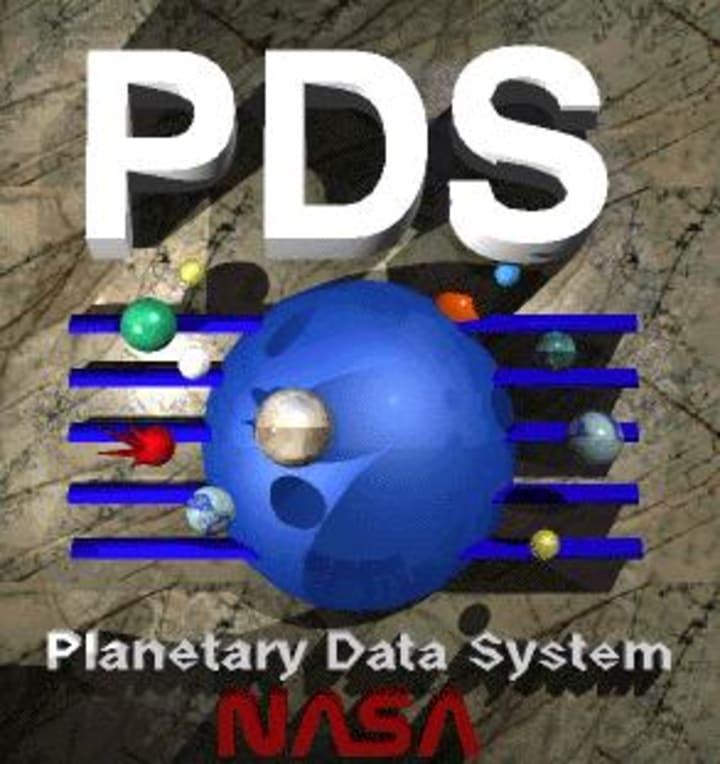
How about the 11th planet?
If you draw a line from the exact center of the blue planet in the bottom left, to the exact center of the green planet in the upper right, the line will go through the exact center of the sun! Indicating that these planets are exactly opposite of each other, with the sun in-between them.
Now there are things done opposite to normal in this logo. For example, if you do a color invert, the blue sun will be yellow. Also, instead of casting shadows away from the sun, they are being cast towards it. This is good, because now, if you look closely at the distances from the planets to their shadows, what stands out, is that only in the case of the blue and the green ones, is the distance from the planet, to its shadows, exactly the same. Indicating that these two planets are the same distance from the sun.
WOW, NASA has had that in front of us for a while. However, there is still more that can be seen in this logo.
The lines that are going through the sun in the PDS logo have meaning. The center one, of course, is in the center. The next ones above and below, go through the sun at 19.5 degrees North and South, respectively.
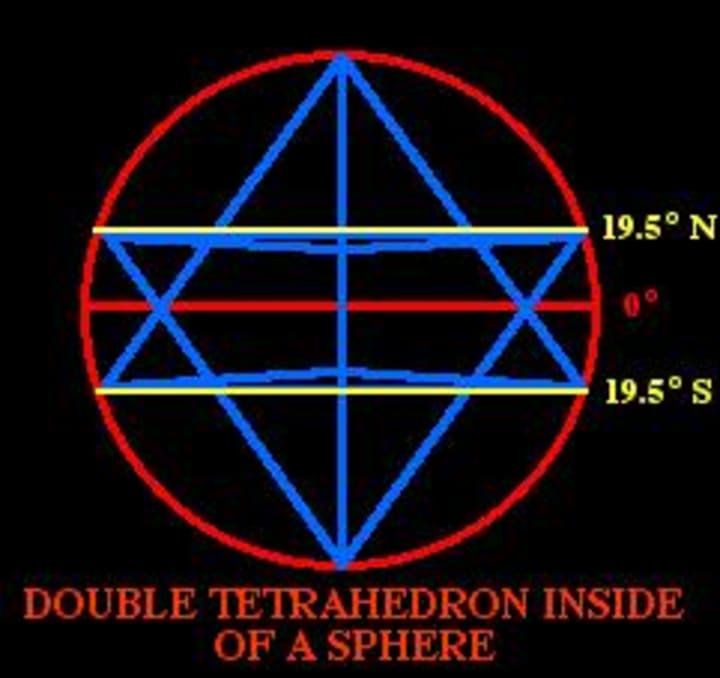
As you can see, a tetrahedron inside of a sphere is always at 19.5 degrees. 19.47, to be exact. Nevertheless, what about the highest and lowest lines? There seems to be no connection until you extend a line from the center of the sun at 19.5 degrees, exiting the sun at one line and ends perfectly at the end of the top and bottom lines.
This gives us a bigger circle, with the endpoints of the top and bottom lines at 19.5 degrees, and now all the planets and the sun will be inside of that circle. Nothing in this logo is random. Like the lines are tilted at about 33 degrees, and the brown dwarf is supposed to be 33 degrees off the plane of the ecliptic. The brown dwarf gives off a dark red light, and when moving into the inner solar system, the light will flare back, like wings, and will have the classical tail, as comets do. The appearance from Earth will be like a cross in the heavens.
In the logo, THE SHADOW of the brown dwarf, (the one streaking like a comet) has wings and a tell but is cleverly mostly covered up by a planet. Also, although there are no moons in the logo, next to the shadow of the green planet, (the one that is opposite of Earth) there is the shadow of two moons. Take a good look!
I suggest that, although I think that most everyone at NASA does not know there is another planet on the other side of the sun, or even about the brown dwarf. However, looking at the Planetary Data Systems logo, there must be at least one person there, that does know. (Probably more than just one.)
http://pds.jpl.nasa.gov OR http://pds-smallbodies.astro.umd.edu/
The 11th planet also seems to fit or answer Richard Hoaglands, "Hyperdimensional Physics" model. Where he says, "We haven't discovered all the remaining members of the solar system yet!"
Go to http://www.enterprisemission.com/hyper2a.html to learn more about his hyper-dimensional physics model.
All truth passes through three stages:
First, it is ridiculed;
Second, it is violently opposed; and
Third, it is accepted as self-evident.
--- Arthur Schopenhauer (1788-1860)
So, we have presented a lot of evidence in support of there being another planet on the other side of the sun, which shares Earth's orbit. Ranging from ancient knowledge to recent information, and including the fact that the orbits of the planets, including Earth, seem to suggest that there is another planet that is acting on them. Newtonian mechanics is at work again, and the idea of a space-time distortion as the answer seems more like fiction in this case.
Perhaps, when the planet is acknowledged, they will name the planet after me, for bringing its existence to light. JK (Ya, in my dreams) Ok, so that's not likely to happen.
Some subjects I would like to add later are, Earths water, the Freemasons, some old paintings, scriptures, the Dead Sea Scrolls, Mythology, Legends and Folklore, Egyptian religion, travel back and forth to the planet (Father Earth), and Aliens, stores from some who say they have been abducted, more from NASA, and the formation of worlds around a brown dwarf. All of these, (and more) further support that, there is another planet, which shares Earth's orbit.
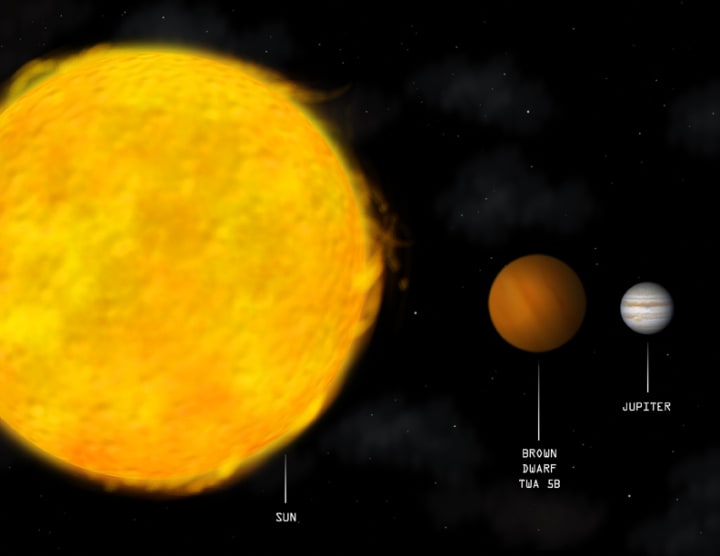
We are now living in a period of time, of "the great restitution." To quote one scripture, (Acts 3: 21,) "the times of restitution of all things, which God hath spoken by the mouth of all his holy prophets since the world began." Ancient knowledge is being restored or relearned. There is still much more to be learned.






Comments
There are no comments for this story
Be the first to respond and start the conversation.